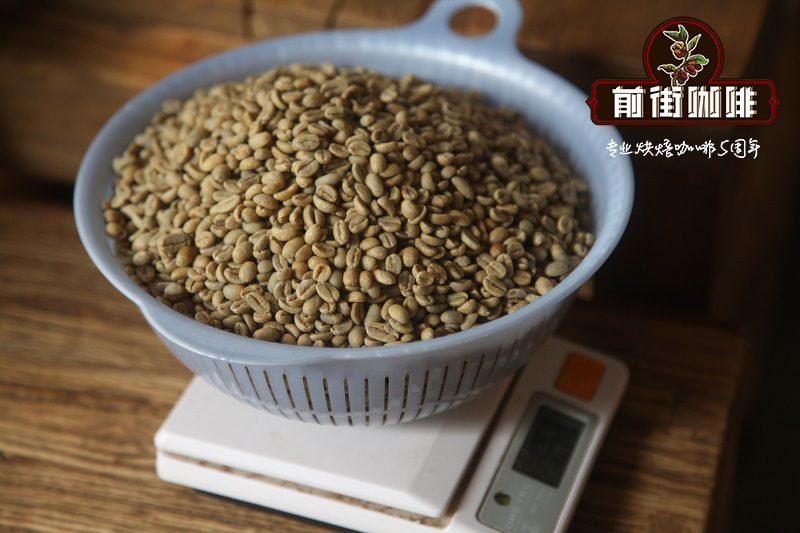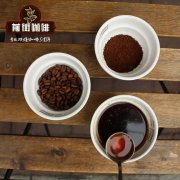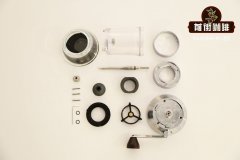What is the effect of ambient temperature on coffee roasting? how to use the rate of environmental change to improve the baking curve

The environmental change rate is not as good as the rising rate, the bean temperature and the environmental temperature are better. But it is even as important, or even more important. It helps to predict the temperature of the drum, which in turn helps to maintain control during the baking process.
What is ambient temperature?
If you don't know the ambient temperature first, you can't understand the rate of environmental change. This is the temperature of the air in the drum of the baking machine measured by a thermocouple, which measures the convective heat in the roaster.
Emerson Nascimento, owner of Coffee Five in Brazil, told me: "it is very important to monitor the ambient temperature because convection energy is a good baking method." This is the reason for highlighting the quality of specialty coffee. " This convective heat, which exists through the gas and liquid of the roaster, is measured to assess the ambient temperature.
Changes in ambient temperature can affect the required quality of baking, or worse, completely destroy baking. Predicting the behavior of ambient temperature helps to control the temperature and prevent any sudden changes.
What is the rate of environmental change?
The rate of environmental change measures how the ambient temperature changes over time and at what speed. It can help predict the temperature behavior in the baking pot, which in turn helps control the baking.
It can be compared to the rising rate of bean temperature (RoR), which can track the change of bean temperature. Usually, this is measured by another thermocouple, which is placed near the bean block.
So, how do you read the rate of change of the environment on the chart? A positive rate of environmental change indicates that the energy (or heat) in the drum is increasing. A negative rate of environmental change will indicate that you are losing energy, regardless of the ambient temperature.
This information is essential for predicting how the ambient temperature changes and, crucially, the rate of change. Tracking this information during baking means that you are aware of potential changes in temperature during baking. This is also indispensable for creating your barbecue materials. Along with RoR and bean temperature, the profile will help you recreate baking consistently.
Francisco Supervielle, co-founder of Seis Montes Montes in Uruguay, told me that tracking the similarities of environmental change rates and RoR is "an important key to consistency".
Francisco stressed the importance of these two selected data and told me: "when you copy baking, when you have more data, you can actually copy it better than if you don't have it."
All the data in baking is important and represents different events that are happening. Ambient temperature data is the key to understanding and tracking baking. However, it can be said that the rate of change of the environment is more helpful in controlling it.
This control is essential for baking and maintaining the consistency of coffee standards.
How to control the rate of environmental change
Now that we know what the rate of change in the environment is, how can we put data reading into practice? There are several ways to control ambient temperature and rate of change.
First of all, please note that each oven is unique. Different materials in the machine will release and absorb energy at different rates. Similarly, different probe sizes will explain the temperature at different speeds. Understanding your toaster and how it reacts with heat and air is critical to controlling the rate of change in the environment.
If the rate of change of the ambient temperature begins to decrease and flatten, it means that the heat in the photosensitive drum is losing and the ambient temperature will drop. This does not necessarily mean that the temperature of the beans will drop. Francisco told me that there are many factors that can lead to a drop in temperature, such as "drum rotation, airspeed, indoor temperature, gas quality, baking capacity and coffee quantity."
Each variable can help you control the rate of change of the environment.
A positive rate of change means that there is enough energy in the machine to keep the bean temperature at a positive RoR. However, if you follow a baking profile and the rate of change exceeds the data in the profile, one of the variables may not be properly managed during baking.
The data of the rate of environmental change tells us how fast the ambient temperature changes in the roaster. Without it, there is a higher unpredictable risk.
The temperature data represents the desired baking curve. However, it is important that the rate of change in the environment indicates how the temperature in the drum changes.
You don't want surprises when baking. You only need to carefully record your environmental change rate and other data to achieve a high degree of consistency.
Important Notice :
前街咖啡 FrontStreet Coffee has moved to new addredd:
FrontStreet Coffee Address: 315,Donghua East Road,GuangZhou
Tel:020 38364473
- Prev

Coffee brewing utensils | the history of AeroPress Philharmonic pressure the birth of the World AeroPress Championships
The AeroPress doesn't look like a coffee brewer, like an infusion needle. It is made by a sports toy manufacturer best known not for coffee but for its Frisbee. Somehow, however, AeroPress has become one of the most iconic coffee brewing methods in the world. Tools of the World Coffee Championships, the World AeroPress Championships (WAC); even
- Next

How to choose the standard of cutter head replacement of coffee grinder the difference between flat knife and cone knife of coffee grinder
The bean grinder is one of the most important coffee equipment you have, whether you are a cafe owner or a coffee lover. Inferior machines can lead to uneven grinding size, which in turn leads to inconsistent extraction rates and cloudy cups. The use of a cutter grinder will greatly improve the quality of coffee. Because the cutter head is not ground by shredding but by pressure, compared with the blade grinder
Related
- Beginners will see the "Coffee pull flower" guide!
- What is the difference between ice blog purified milk and ordinary milk coffee?
- Why is the Philippines the largest producer of crops in Liberia?
- For coffee extraction, should the fine powder be retained?
- How does extracted espresso fill pressed powder? How much strength does it take to press the powder?
- How to make jasmine cold extract coffee? Is the jasmine + latte good?
- Will this little toy really make the coffee taste better? How does Lily Drip affect coffee extraction?
- Will the action of slapping the filter cup also affect coffee extraction?
- What's the difference between powder-to-water ratio and powder-to-liquid ratio?
- What is the Ethiopian local species? What does it have to do with Heirloom native species?

